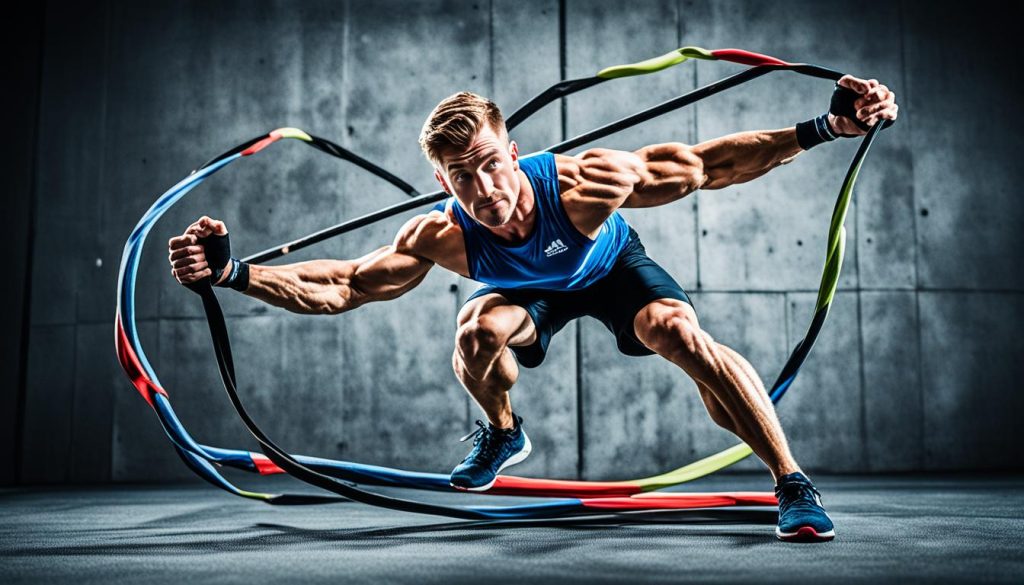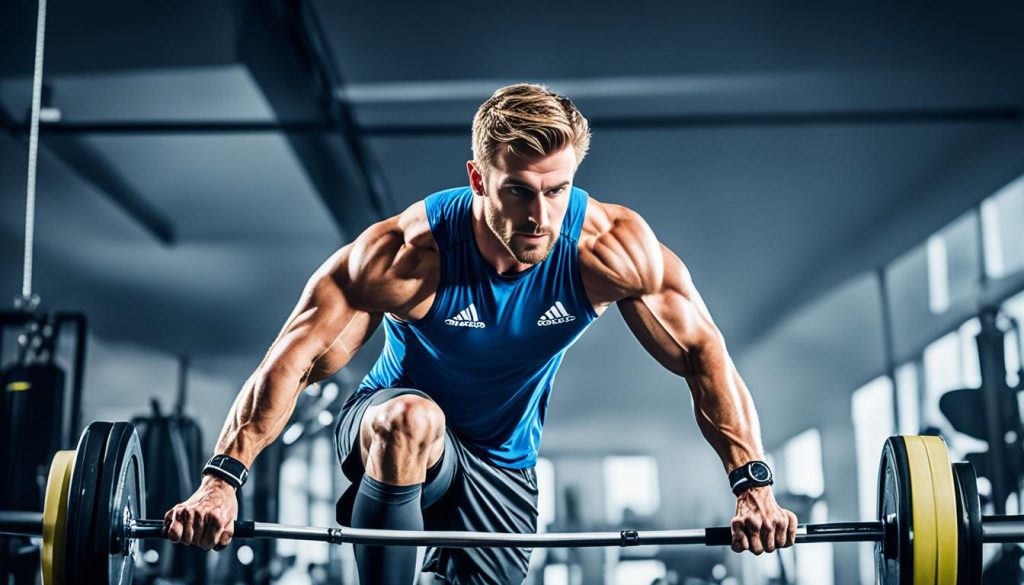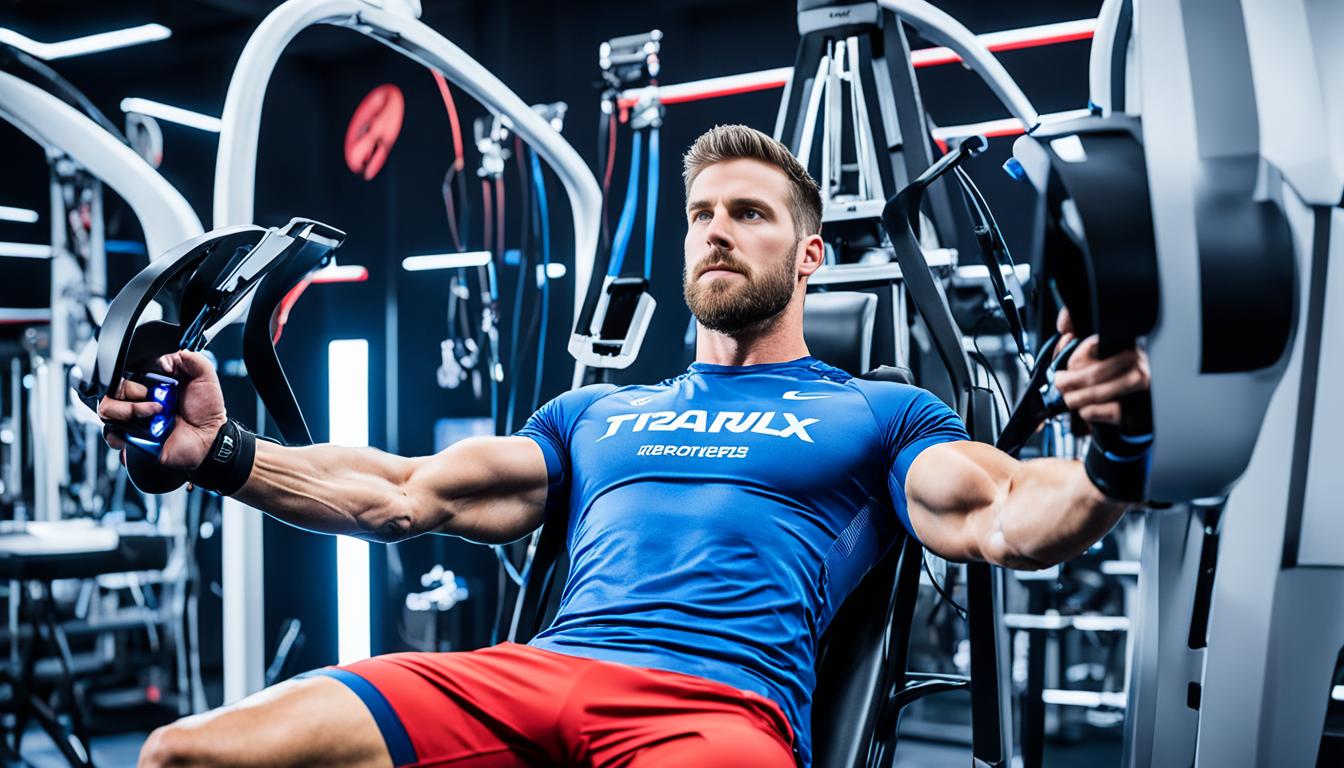Peak Performance about State of the Art Athletic Training Methods Elevating Athletes to Success
Welcome to our article on peak performance and the state-of-the-art athletic training methods that are revolutionizing the world of sports. As athletes strive to achieve their goals and reach new heights in their respective sports, it is essential to understand the advanced techniques and strategies that can help them excel.
State-of-the-art athletic training methods encompass a wide range of physical and mental conditioning techniques that are designed to optimize athletic performance. These methods go beyond traditional training approaches, integrating innovative strategies that target specific areas of improvement and enhance overall athleticism.
By embracing these cutting-edge athletic conditioning methods, athletes can achieve peak performance by pushing the boundaries of their physical capabilities and tapping into the power of their minds. These techniques not only focus on building strength, speed, and agility but also emphasize the importance of mental resilience, focus, and strategic decision-making.
Whether you are a professional athlete or a sports enthusiast looking to take your performance to the next level, understanding the latest advancements in athletic training methods is crucial. In this article, we will explore the concept of peak performance in sports, the importance of sport-specific conditioning, the components of effective athletic training, and more.
Key Takeaways:
- State-of-the-art athletic training methods optimize athletic performance through physical and mental conditioning.
- These methods focus on specific areas of improvement and enhance overall athleticism.
- Athletes can achieve peak performance by pushing physical boundaries and tapping into mental resilience.
- Understanding the latest advancements in athletic training is crucial for athletes at all levels.
- Stay tuned as we explore the world of peak performance and the strategies that can help take your athletic abilities to the next level!
Understanding Peak Performance in Sports
Peak performance in sports is the ultimate goal for athletes striving for excellence. It entails reaching the highest level of achievement in their respective sports through a combination of physical and mental elements. To achieve peak performance, athletes must possess dedication, perseverance, and a positive mindset towards training and competition.
Achieving excellence requires setting specific goals and developing strategies to overcome challenges along the way. Athletes must prioritize factors such as nutrition, rest, and psychological support to optimize their performance and maintain a competitive edge.
This holistic approach to peak performance enables athletes to unlock their full potential, learn valuable lessons, and continuously improve. By embracing the physical and mental demands of their sport, athletes can cultivate the necessary skills, discipline, and mindset needed to excel.
“The difference between ordinary and extraordinary is that little extra.” – Jimmy Johnson
By consistently pushing their limits and striving for improvement, athletes can elevate their performance to new heights. This involves honing physical skills, refining techniques, and maintaining mental resilience. It is through this combination of physical and mental elements that athletes can achieve excellence and fulfill their sporting ambitions.
Nutrition: Fueling the Body for Optimal Performance
Proper nutrition plays a vital role in supporting an athlete’s peak performance. A well-balanced diet that includes the right proportions of macronutrients (carbohydrates, proteins, and fats) and micronutrients (vitamins and minerals) is essential for optimal physical and mental functioning. Nutrition fuels the body, enhances energy levels, and aids in muscle recovery, enabling athletes to perform at their best.
Mindset: Cultivating Mental Resilience
The mental aspect of peak performance is equally important as the physical aspect. Athletes must develop a resilient mindset to overcome obstacles, manage pressure, and maintain focus during training and competition. Techniques such as visualization, goal setting, and positive self-talk can enhance mental resilience, enabling athletes to stay motivated and perform under challenging circumstances.
Rest and Recovery: The Key to Sustaining Peak Performance
Rest and recovery are crucial components of achieving and sustaining peak performance. Adequate sleep, active recovery sessions, and strategic rest days allow the body to repair and rebuild, reducing the risk of injuries and preventing burnout. By prioritizing rest and recovery, athletes can optimize their training gains and maintain their performance over the long term.
Understanding the physical and mental elements of peak performance is essential for athletes aspiring to achieve excellence. By integrating effective training strategies, proper nutrition, a resilient mindset, and adequate rest and recovery, athletes can unlock their full potential and perform at their peak, both on and off the field.
| Physical Elements | Mental Elements |
|---|---|
| Strength and conditioning | Mental resilience |
| Speed and agility | Focus and concentration |
| Endurance and stamina | Goal setting and visualization |
| Flexibility and mobility | Positive self-talk |
The Importance of Sport-Specific Conditioning
Sport-specific conditioning plays a crucial role in helping athletes excel in their chosen sport. By tailoring training programs to the specific physical skills, movements, and energy systems required in the sport, athletes can optimize their performance and reduce the risk of injuries.
Targeted training that focuses on sport-specific skills is essential for athletes looking to reach their full potential. It allows them to develop precise techniques and movements that are inherent to their sport, enhancing their chances of success.
Benefits of Sport-Specific Conditioning
Sport-specific conditioning offers several notable benefits:
- Improved Performance: By targeting the specific physical demands of a sport, athletes can enhance their overall performance. Whether it’s agility and speed for soccer players or endurance and strength for long-distance runners, sport-specific conditioning helps athletes optimize their abilities.
- Injury Prevention: By tailoring training programs to address the specific demands of a sport, athletes can reduce the risk of injuries. Conditioning exercises that strengthen the muscles and joints essential to the sport, combined with proper technique training, can help athletes avoid common injuries and stay in peak condition.
- Enhanced Skill Development: Sport-specific conditioning allows athletes to practice and refine the precise techniques and movements required in their sport. This focused training helps athletes develop muscle memory and increase their proficiency, leading to improved performance during competitions.
Athlete Examples
To illustrate the importance of sport-specific conditioning, let’s look at a few examples of how targeted training can benefit athletes in different sports:
| Sport | Benefits of Sport-Specific Conditioning |
|---|---|
| Tennis |
|
| Gymnastics |
|
| Swimming |
|
By incorporating sport-specific conditioning into their training regimens, athletes can optimize their performance, reduce the risk of injuries, and develop the skills necessary to excel in their chosen sport.

Components of Effective Athletic Training
Effective athletic training incorporates various components to optimize athletes’ performance and development. These components include:
Risk Management
Prioritizing risk management is essential to create a safe training environment for coaches and athletes. By identifying potential risks and implementing proactive measures, such as ensuring proper equipment and facilities, athletes can minimize the likelihood of injuries and accidents.
Injury Prevention
Injury prevention strategies play a crucial role in athletic training. Each sport presents unique vulnerabilities, and coaches need to address them effectively. By incorporating proper warm-up and cool-down routines, implementing strength and conditioning exercises, and promoting proper technique, athletes can reduce the risk of injuries and stay at the top of their game.
Communication
Effective communication between coaches and athletes is paramount for successful athletic training. Clear and open lines of communication foster understanding, trust, and collaboration, which leads to more effective teaching, teamwork, and ultimately, improved performance.
Nutrition
Nutrition plays a vital role in athletes’ overall performance, energy levels, and recovery. Providing proper fuel for their bodies helps optimize their physical and mental capabilities. Coaches and athletes should work together to develop individualized nutrition plans that align with their training goals and specific dietary needs.
Goal Setting
Setting achievable and measurable goals is fundamental to athletes’ development and progress. By setting clear targets, athletes can focus their training efforts, stay motivated, and track their progress over time. Coaches should guide athletes in goal setting, ensuring that goals are challenging yet realistic, and provide ongoing support and feedback as athletes work towards achieving them.
Athlete Development
Athlete development encompasses continuous skill improvement and supporting athletes’ physical and mental growth. Coaches should design training programs that cater to individual strengths and weaknesses, promote resilience and adaptability, and provide opportunities for personal growth and self-reflection. By nurturing overall athlete development, coaches can help athletes reach their full potential.
By integrating these components into their training programs, coaches and athletes can optimize performance, minimize injuries, and cultivate well-rounded athletes who excel both on and off the field.

Conclusion
Sports-specific conditioning is the key to unlocking peak performance and achieving success in the athletic arena. By tailoring training programs to the unique demands of each sport, athletes can maximize their potential, minimize the risk of injuries, and enhance their skills. It is essential for coaches and athletes to prioritize the components of effective athletic training, including risk management, injury prevention, communication, nutrition, goal setting, and athlete development.
By implementing state-of-the-art athletic training methods, athletes can take their performance to new heights, surpassing their limits, and reaching their full potential. These methods allow athletes to fine-tune their abilities and address the specific requirements of their sport. Sports-specific conditioning not only improves physical attributes but also enhances mental resilience and strategic thinking, giving athletes a competitive edge.
Success in sports is not solely defined by winning or setting records; it is about personal growth and development. Through sports-specific conditioning, athletes can learn the value of discipline, dedication, perseverance, and teamwork. These qualities extend beyond the playing field and contribute to their overall success in life.
FAQ
What are state-of-the-art athletic training methods?
State-of-the-art athletic training methods are cutting-edge techniques designed to help athletes achieve peak performance in their respective sports.
What is peak performance in sports?
Peak performance in sports refers to the achievement of the highest level of excellence by athletes, encompassing both physical and mental elements.
Why is sport-specific conditioning important?
Sport-specific conditioning is vital for athletes to excel in their chosen sport, as it tailors training programs to the specific physical skills, movements, and energy systems required.
What are the components of effective athletic training?
The components of effective athletic training include risk management, injury prevention, communication, nutrition, goal setting, and athlete development.
How can state-of-the-art athletic training methods elevate athletes to success?
By utilizing high-end athletic conditioning methods, athletes can elevate their performance to new heights and achieve their goals, reaching their full potential in their respective sports.
